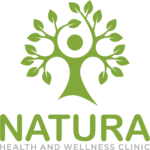by Kathy Mangan
“Perhaps it is time to level set the mindset. Even though some confuse “growth mindset” with terms such as grit and effort, that is not the case. Effort is involved but it isn’t just about effort. Far more than effort, your mindset is about your access to support and your repertoire of strategies to help you solve problems. Effort is your means to an end, not the end. The end is that learning is improving.” (Dweck, 2015.)
Carol Dweck, one of the foremost authorities on fixed and growth mindsets really helps us understand the power of thought as it pertains to trauma resilience. The way we view the events of our lives matters.
Dweck acknowledges that there is probably no such thing as a PURE growth mindset. We are mix of growth and fixed mindsets. We, at the same time, believe that we can improve through effort and learn strengths and abilities and also that are abilities are just what they are.
Those of us with a fixed mindset see intelligence as static. This sets us up for feeling threatened by the success of others, to avoid challenges, to give up easily, to ignore feedback and to expect reward without any effort. On the other end of the spectrum, those of us with a growth mindset see intelligence as something that can be developed. This opens us up to embrace challenge as opportunity, to be inspired by the success of others, to put in the effort required to retrain our brains and to use feedback as guidance to help us grow.
The great news, once you recognize where you fixed mindset patterns of thinking are, you can begin to shift them. Exploring your relationship with “what if I fail?”, accessing the those in your life who support you and actually listening to them, recognizing that you do have choice, and then acting on the choices that you identify are key to getting started.
































